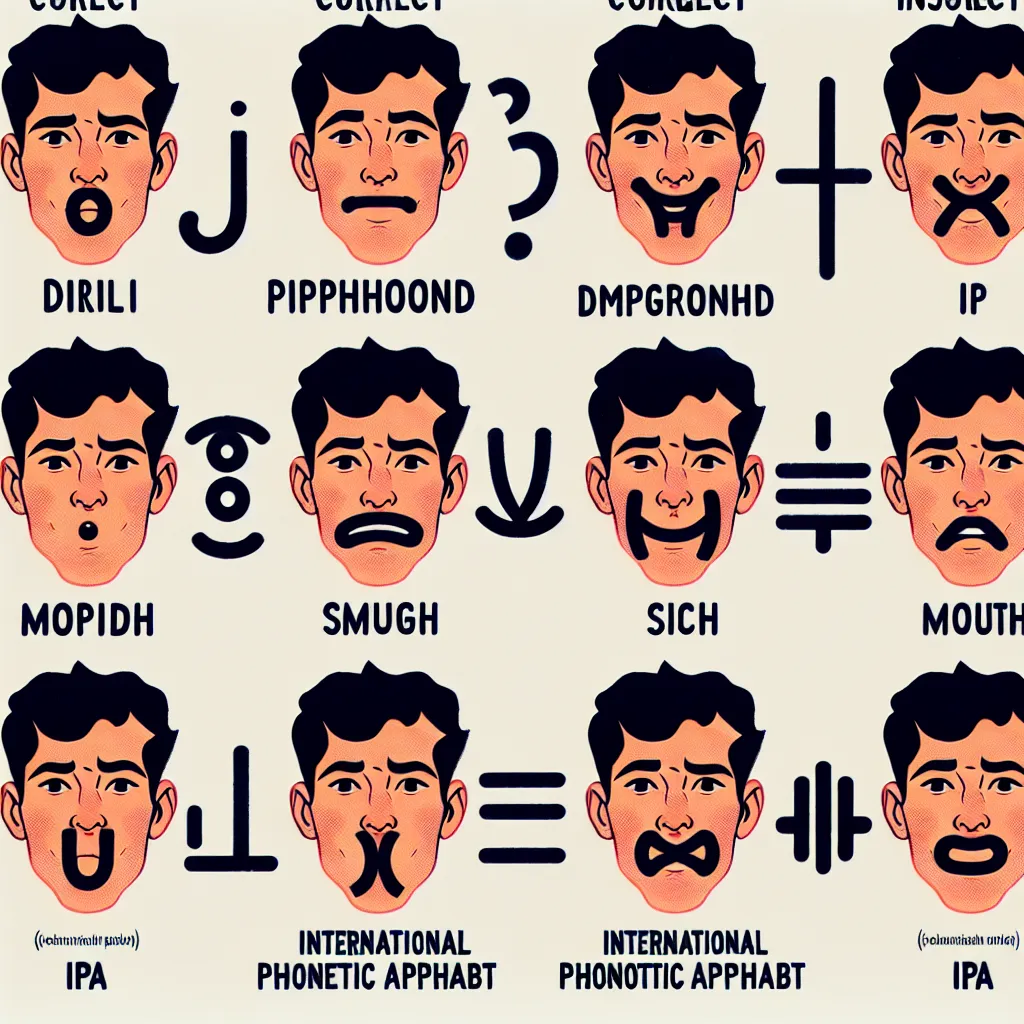Are you struggling with English pronunciation, particularly when it comes to diphthongs? You’re not alone. Many learners find diphthongs challenging, but with the right techniques and practice, you can master them. This guide will walk you through everything you need to know about pronouncing English diphthongs correctly.
What Are Diphthongs and Why Are They Important?
Diphthongs are complex vowel sounds that involve a transition from one vowel sound to another within the same syllable. They are crucial in English pronunciation because they help distinguish between words and contribute to the natural rhythm and intonation of the language.
 English Diphthongs Pronunciation Guide
English Diphthongs Pronunciation Guide
The 8 Main English Diphthongs
- /eɪ/ as in “day”
- /aɪ/ as in “my”
- /ɔɪ/ as in “boy”
- /ɪə/ as in “hear”
- /eə/ as in “bear”
- /ʊə/ as in “tour”
- /əʊ/ as in “go”
- /aʊ/ as in “now”
Understanding these diphthongs is essential for clear and natural-sounding English pronunciation.
How to Pronounce English Diphthongs
1. Break Down the Sounds
To pronounce diphthongs correctly, start by breaking them down into their component sounds. For example:
- /eɪ/ = /e/ + /ɪ/
- /aɪ/ = /a/ + /ɪ/
- /ɔɪ/ = /ɔ/ + /ɪ/
Practice each sound individually before combining them.
2. Focus on the Transition
The key to pronouncing diphthongs is the smooth transition between the two vowel sounds. Start with the first sound and gradually move your mouth to form the second sound. This movement should be fluid and continuous.
3. Use Mirror Practice
Watch your mouth movements in a mirror as you practice. This visual feedback can help you adjust your pronunciation and ensure you’re making the correct shapes with your mouth.
4. Exaggerate at First
When learning, it can be helpful to exaggerate the mouth movements and the transition between sounds. As you become more comfortable, you can refine your pronunciation to sound more natural.
Common Mistakes and How to Avoid Them
-
Pronouncing diphthongs as single sounds: Remember that diphthongs involve a transition between two vowel sounds.
-
Incorrect stress: In words with diphthongs, make sure you’re placing the stress on the correct syllable.
-
Over-pronouncing the second sound: The second sound in a diphthong is usually shorter and less emphasized than the first.
-
Ignoring regional variations: Be aware that diphthongs can vary slightly between different English accents.
To avoid these mistakes, listen carefully to native speakers and practice regularly. You can find excellent resources for pronunciation practice on our website, such as tips for mastering tricky English sounds.
Effective Techniques for Practicing Diphthongs
-
Minimal Pairs: Practice with words that differ only in their diphthong sound, such as “light” vs. “late” or “boy” vs. “buy”.
-
Tongue Twisters: Use tongue twisters that focus on specific diphthongs to improve your pronunciation and fluency.
-
Record and Compare: Record yourself pronouncing words with diphthongs and compare your pronunciation to that of native speakers.
-
Shadowing: Listen to native speakers and try to mimic their pronunciation in real-time.
-
Pronunciation Apps: Use apps designed for pronunciation practice, which often provide instant feedback.
For more strategies on perfecting your English pronunciation, check out our article on strategies for perfecting English pronunciation.
The Phonemic Chart and Common Mispronunciations
Understanding the phonemic chart can greatly aid in learning diphthong pronunciation. Here are 10 words with diphthongs that are commonly mispronounced:
- “Height” (/haɪt/)
- “Tour” (/tʊə/)
- “Choir” (/kwaɪə/)
- “Buoy” (/bɔɪ/)
- “Scour” (/skaʊə/)
- “Poem” (/pəʊəm/)
- “Liar” (/laɪə/)
- “Weird” (/wɪəd/)
- “Bouquet” (/buːkeɪ/)
- “Foyer” (/fɔɪeɪ/)
To correct these mispronunciations, focus on the specific diphthong in each word and practice the transition between the two vowel sounds.
 Common Diphthong Pronunciation Errors
Common Diphthong Pronunciation Errors
Conclusion
Mastering English diphthongs is a crucial step in improving your overall pronunciation. By understanding what diphthongs are, how to pronounce them correctly, and practicing regularly, you can significantly enhance your English speaking skills. Remember to be patient with yourself and celebrate your progress along the way.
For more resources on improving your English pronunciation, don’t forget to explore our other articles, such as how to develop a natural English accent. Keep practicing, and you’ll soon find yourself pronouncing diphthongs with confidence and ease!




